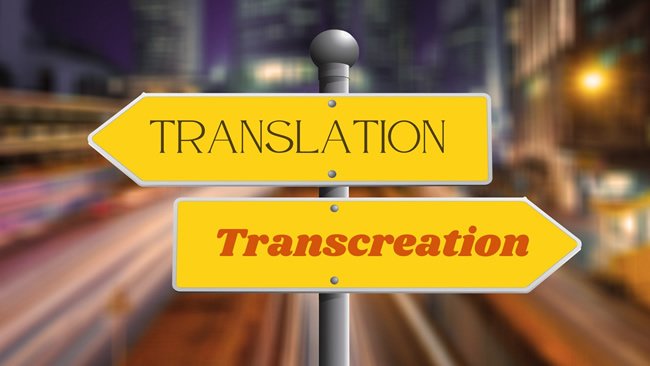How Transcreation is Different from Translation
Whether you are a small, local business or a large corporation, going global is a complex and dynamic process. One of the most important aspects to consider is to globalize the business brand identity to your target markets. Here is where translation and transcreation become important to your success.

What is Translation?
Translation is the process of rendering one language to another. The goal of translation is to deliver the meaning of the source content with a high level of accuracy. Translators make sure that tone, expressions, grammar, and sentence structures remain identical to the source language content. Translation is mostly used for governmental documents, user manuals, legal documents, scientific research, and business papers as accuracy is the top priority.
What is Transcreation?
The term Transcreation comes from the combination of the words Translation and Creation. Transcreation means creatively translating content. This is mostly used in translating marketing content where it is important to adapt the source content message so that it is well-received in the target market. Transcreation is an extra step further from translation, where the transcreator understands and feels the source content’s spirit and then renders it into the target language. It’s not a must for the transcreators to use the exact grammar structures or word-for-word translation of the source content. Transcreators are free to create unique and creative content that evokes the feelings and meaning of the original content, but adapts it to the culture of the target market so that it is perceived as if the content was originally written in the target language.
How to decide if you need Translation or Transcreation?
Transcreation and translation are considered the opposite sides of the same coin. Both aim to make the content accessible in a language other than the one in which it was first created.
Translation is well-suited for technical reports, user manuals, financial reports, legal documentation, and service-level agreement (SLA), where the content must be rendered from the source language to the target language(s) in the same way, structure, and wording as it’s written in the source language. These types of materials are written in a straight-forward, business-tone which do not require a creative interpretation.
You will need transcreation if you’re globalizing your brand name, slogan, marketing campaign, website, or brochures-essentially any creative content. The transcreated content aims to evoke the same emotional response that is triggered in the source language by adapting it to the culture of the target market. This includes keeping any creative remarks, expressions, feelings, concepts, and idioms in the source content.
Differences between Translations and Transcreation
| Translation | Transcreation | |
| Specialist | Translator | Transcreator/Copywriter |
| Type of Materials | Governmental documents, financial reports, medical reports, fact sheets, user manuals, technical documentation, legal documents, and agreements | Marketing campaigns, brand names, slogans and taglines, social media campaigns, advertisements, websites, and brochures. |
| Target Culture and Market Study | Recommended | Mandatory |
| Cost | Less expensive | More expensive |
| Rates and Prices | Calculated per word | Calculated per project/hour |
Transcreation Examples
1. Coca-Cola
In 2011, Coca-Cola launched its “Share a Coke” campaign in Australia and later to 70 other countries. Coca-Cola printed the most common local names in each country onto millions of cans and bottles and added the slogan “Share a Coke with…” before the printed names on the cans and bottles. The slogan “Share a Coke with…” got creatively translated into different languages. It was not translated word-by-word. Instead, it was transcreated to make it more fun.
2. McDonald’s
McDonald’s decided to transcreate its global slogan “I’m loving it!” for the Chinese market to “I just like it!” because it is offensive to use the word “love” in public.
3. Mitsubishi Motors
Mitsubishi Motors had to change the “Pajero” model name to “Montero” in Spain and Spanish-speaking countries as it failed to make any sales when it launched the Pajero model in these countries. This is because the word “Pajero” means “the person who carries straw” in Spanish.
4. Hong Kong Tourist Board
The Hong Kong Tourist Board tried to have their slogan “Hong Kong: It will take your breath away” changed because it has coincided with the SARS epidemic. One of the main symptoms of SARS is shortness of breath, hence, taking one’s breath away could convey a negative context.
Conclusion
Translation is the process of rendering content from a source language to a target language. The goal of translation is to guarantee the meaning and accuracy of the source content. In translation, translators must make sure that the grammar, sentence structures, and author’s tone remain identical to the source content. Some minor changes can be applied to avoid social or cultural conflicts.
When it comes to marketing material like brand names, slogans, and advertisements, transcreation is required. The process of transcreation should be run by professionals who fully understand the product they are selling and are also aware of who is going to use this product. The successful analysis of the language, paying attention to cultural differences, and the appropriate use of idioms will make any transcreation project a great success.
